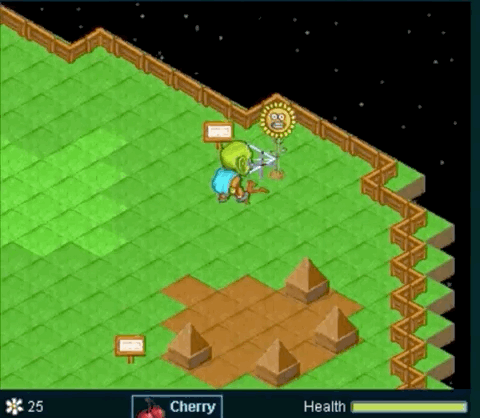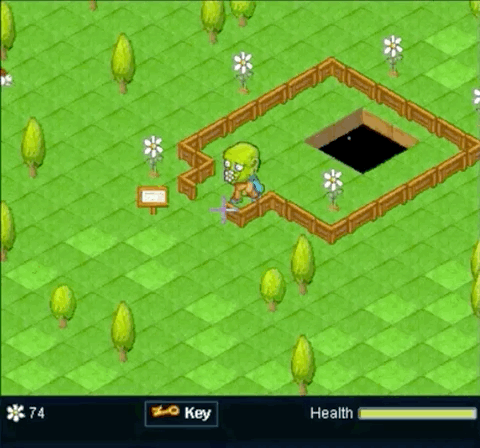When we look at Diablo, we don’t really see it as a game under the open-world genre. Rather, it is has its own genre (although scarcely defined on Wikipedia as dungeon-crawler). Why is that?
Note: While this article may reference other material, it mainly focuses on the Diablo series, and especially Diablo 3. Also, I’m just a casual player, so my experience with the game may largely differ from others.
Attempts and Obstacles
I want to start by attacking straight on point: the world.
The world is basically how the game’s levels are structured. Wikipedia crowns the world of Grand Theft Auto III as the prime example of modern open-world games. If we look at the game, plus a few other titles that are more often regarded as open-world games (such as Breath Of the Wild, Skyrim, Red Dead Redemption), we’ll easily notice that all these games share a common feat: it’s main level is a seamless map. I used the term “main” for players spend the majority of their time on it. Meanwhile Diablo, Path of Exile and other dungeon crawling games, the loading in between levels are simply obvious.
But seamless map design is not the criterion here, or at least it doesn’t stand as a deciding factor alone. I’d argue Super Mario 64 (and Odysssey) are open-world games; the key factor here, I think, is what exists in the “unimportant” areas. These areas can include space that has been visited already, or in a large open world, space that has absolutely no reason to visit (i.e. no quests) in order to finish the game. In Breath of the Wild, you visit different locations to get Korok seeds, which has been proven not required to save Hyrule; similarly, you don’t need to deliver pizzas to protect New York City in Spider-man 2. When compared to the main objective (saving Hyrule, protecting NYC), these content are additional and irrelevant to the main plot, but adds flavor and breadth to the experience.

If games are “voluntary attempts to overcome unnecessary obstacles“, then I argue that open-world games are collections of “voluntary attempts to overcome unnecessary obstacles and attractions“.
Looking back at Diablo and Path of Exile, one will immediately understand that these two games (and perhaps the genre itself) stands at the opposite end of the spectrum. In both of these games, each act is a series of maps of similar aesthetics and minions, and these maps all serve to convey a single plot, which translates into a single objective. When the plot in the area is completed, the game prompts you to move on to the next act, and there is no reason for you to revisit the area anymore. In other words, there are no attractions. While this allows writers to develop stories easier, it also results in a lot of the map’s potential to go into waste.
That being said, I must add that Path of Exile actually has unnecessary attractions, namely the Blight and Vaal Chambers. The blight is especially interesting since it adds an additional layer of tower-defender on top of the core dungeon-crawling gameplay.

This also reminds me of one particular game: Sonic Adventure (1998). It features open areas where players can explore, but there’s hardly anything else that could be recognized as unnecessary attempts (except Chao Garden and Twinkle Circuit). It may have a large map, but I wouldn’t call it an open-world game.

Source: https://www.deviantart.com/xmilesprower/art/Sonic-Adventure-DX-Chao-garden-692311415
One may argue that players must travel around the city to gain certain key upgrades, such as the keystones to Windy Valley or the Light-speed Shoes upgrade (required to enter Casinopolis); while it is true that players have to traverse the map, they are all necessary effort as you need these items to proceed / clear the next stage. Once these items are obtained, most of the map goes to waste.


Now I must ask myself: how do I make a dungeon-crawling experience more open-world-like (pardon the word chains)? The problem here is that if we were to take out the world structure of Diablo, then it loses its signature; so, we must consider keeping the structure as a design restriction.
I wonder if any games can provide inspiration?
Daily Quests in MMOs: Reusing Space As An Additional Advantage
In my experience with open-world MMORPGs: Blade and Soul, Black Desert Online, World of Warcraft and such, daily quests are mainly tools to keep the players in the game, but they are also great opportunities for players to revisit areas.

The problem here is that daily quests feel pretty much the same, and can easily drain players’ interests. I like to play MMORPGs because I can explore the world and try out different subsystems in the game (like cooking and such), but I never bothered grinding on daily quests; that being said, I believe the success of such design largely depends on how the game (including maps, combat, encounters) are designed to handle daily quests, but that’s a branch of story for another time.
If Diablo decides to implement such quest system, I would consider it as a “direct approach” to add attractions to the playground.
NieR: Automata and Undertale: Reusing Space as Instrument of Narrative
The title pretty much says it all — both of these games re-use their levels to tell a different story. In NieR: Automata, you revisit the abandoned cities as you unravel the cruel fact behind humanity’s disappearance; in Undertale, you revisit the world with a different approach in order to navigate yourself into a different branch of story.

This may sound interesting, but writing great stories just for the sake of using levels in a new way is unsustainable, especially for a live-service game. I would argue that if a team were to implement this strategy, they would need an infinite amount of Toby Fox’s to pull it off, for obvious reasons.
But what if the world in which Diablo takes place works in a particular way that requires players to find things?
The Flowering Nose in Slugland: Mechanisms That Maximizes Use of Maps
The Flowering Nose is a 2004 browser game by Seth Fisher and Omar Waly. It features a similar level layout to Diablo, especially the use of isometric projection.
The fun thing about this game, however, is how the world defines the process of going to another level: players must put an object on a receiver tile; the portal then opens a gateway to a corresponding level. This means that players will go to levels like “strawberry level” or “cake level”.

If you fall down a hole, you don’t die — instead, you go to level hell.

Then, the story requires you to go to all these different levels, and figure out a way to open the locked door seen on the first level you enter. Here, the objective is clear, but the world itself is a huge attraction for players to explore and experience.
What if Diablo takes a similar approach?
I Am Legend: Diablo
Here’s an idea I think Diablo (or any other suitable game) can work on. This idea is first seen, by me, in a long-forgotten game called I Am Legend: Survival.
I Am Legend: Survival is a 2007 online multiplayer game hosted on Second Life, presumably used as a marketing boost for the actual movie. Players pick one of the two factions (humans and zombies). While the goal of the zombie faction is obvious — eliminate humans — humans must work through the entire city and find the ultimate cure.
What’s special about this cure is that it’s the combination of several unknown objects in the world. It can be anything. To validate the results, labs are established scarcely across the huge map, and zombies can temporarily take down these locations. The key point here is that players must travel the world, collect items, combine them, and validate the results to win the game. The world, again, is an attraction. Additionally, players had competed against each other to be the first to the cure, even if the game did not specify such rule.
In other and short words, this is a great competitive multiplayer idea that incorporates map usage and attractions. It is also a competitive multiplayer that requires more of the players’ uptime than their skills.
Here’s my imagination if Diablo III draws from this design (note that these are just concepts and thus doesn’t attempt to align with the Diablo Lore):
- Each season marks a new beginning of the hunt for a “key” — forged to open a door, which leads to victory.
- The recipe for the key is unknown, but a device is created to vaguely verify the results. Imagine Bulls and Cows, especially where the Bs only tell you that there is a correct number in the wrong position.
- Each player who decides to enter the game must pay a LOW entrance fee. This entrance fee builds up in the end and becomes the prize for whoever enters the door first.
Of course, this would possibly prompt for a total redesign of the item system in Diablo (in which the only items are equipment). Nevertheless, this may transform the Diablo game into a more open-world experience, without hurting the main game loop and story much.
Anyways, thanks for reading all this babble! Let me know what you think.

